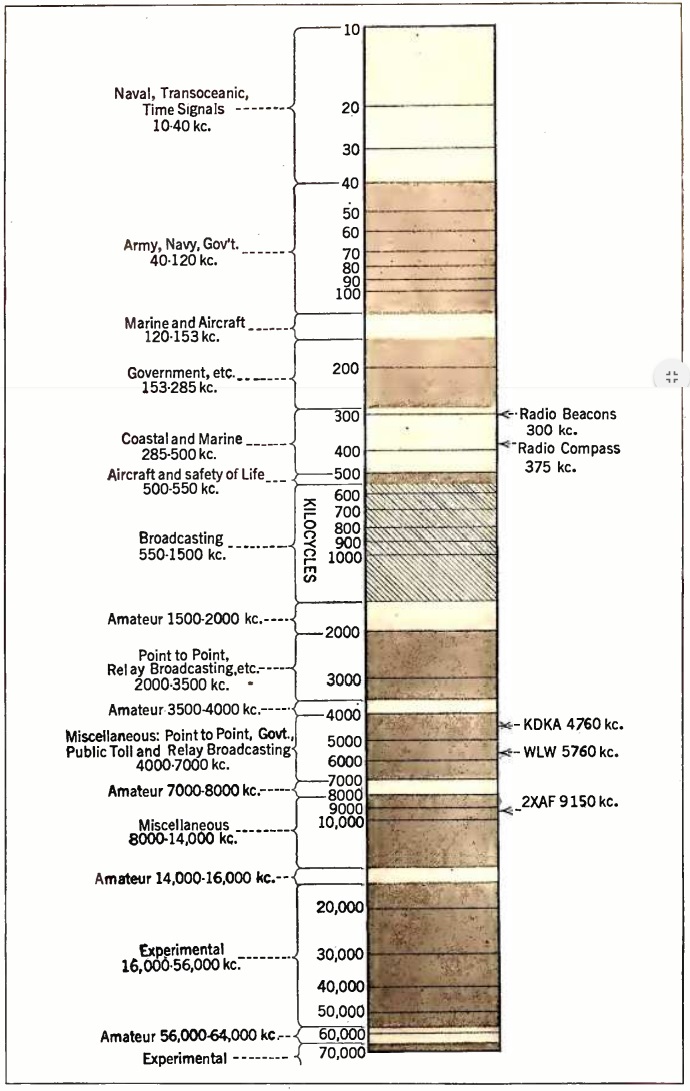 Here’s a snapshot of what the radio frequency spectrum looked like 90 years ago, from the July 1928 issue of Radio Broadcast magazine.
Here’s a snapshot of what the radio frequency spectrum looked like 90 years ago, from the July 1928 issue of Radio Broadcast magazine.
The standard broadcast band was, at this time, recognizable as covering 550-1500 kHz. The long-time 600 meter marine calling frequency is shown as “aircraft and safety of life” assigned to 500-550 kHz. Other longwave allocations included naval, “transoceanic,” government, and marine.
The 160, 40, and 20 meter amateur bands are in the same places they are today, but with only 80 meters having its current boundaries. 160 meters covered 1500-2000 kHz, with 40 meters spanning 7-8 Mhz. The 20 meter band was a full two MHz wide, covering 14-16 MHz. The old 5 meter band is present at 56-64 MHz, which is a harmonic relationship with the other bands.
Three broadcasters are shown on the shortwave dial. KDKA and WLW had shortwave signals at 4760 and 5760 kHz, respectively. 2XAF (assigned before the international prefixes were adopted) was one of the GE transmitters at Schenectady, NY.
